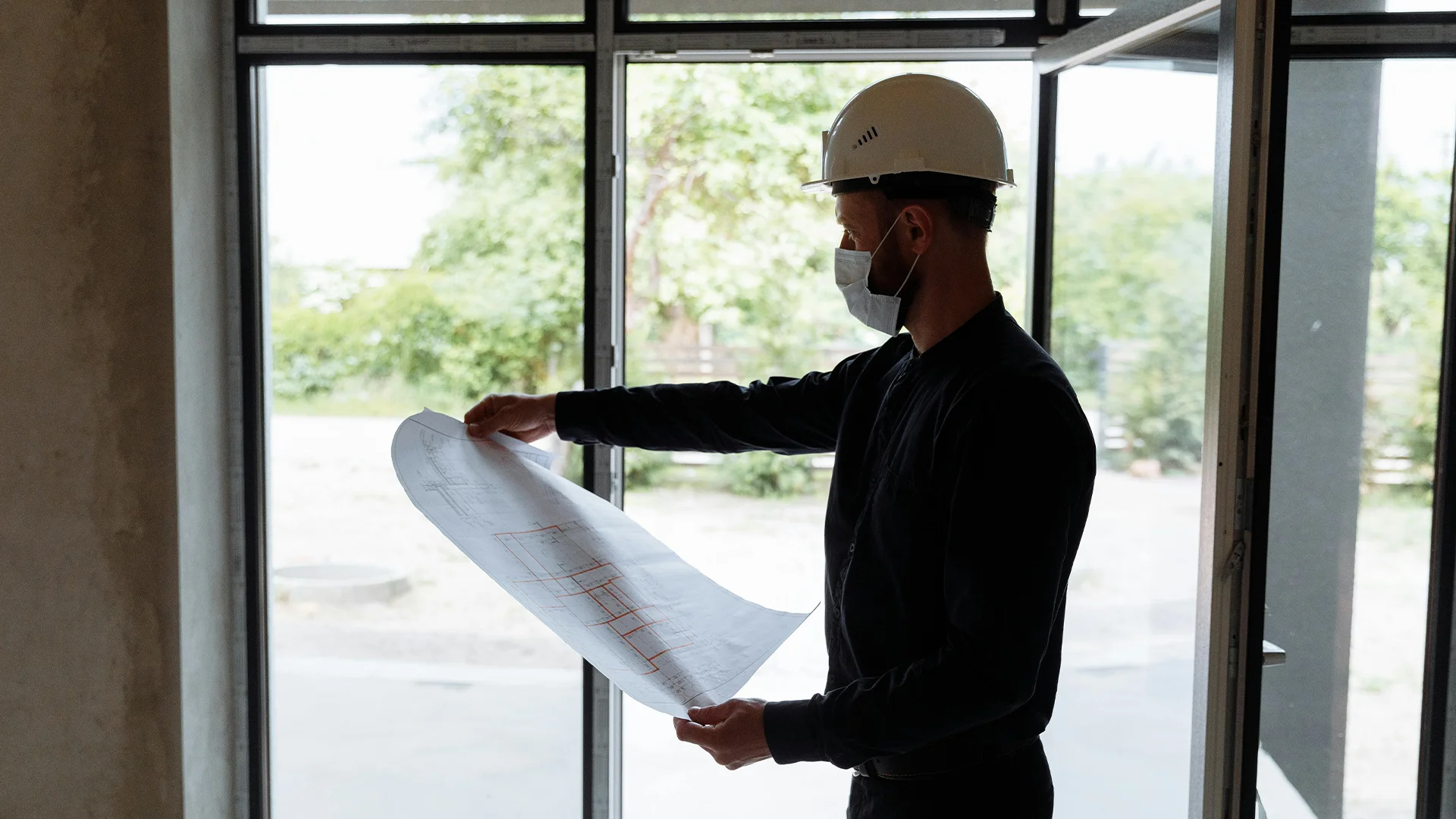Unlocking the Mysteries of Forensic Structural Reports
In the complex world of construction and engineering, the term Forensic Structural Reports often evokes a sense of urgency and importance. These reports are not merely documents; they are vital tools that can make or break a project, especially when disputes arise or safety concerns are at play. As a stakeholder, understanding the intricacies of these reports can empower you to safeguard your investments and ensure compliance with industry standards.
Welcome to our guide, Forensic Structural Reports: A Guide for Stakeholders, designed specifically for those who require comprehensive engineering reports. Whether you are a property developer, contractor, or simply someone with a vested interest in structural integrity, this guide will shed light on why forensic reports are crucial in today’s engineering landscape. We’ll delve into their purpose, the process of creating them, and their implications for all parties involved.
Forensic Structural Reports serve as a forensic analysis of structures, identifying any failures or risks while providing recommendations for mitigation. They play an essential role in the broader context of Expert Engineering Analysis Reports, offering a detailed examination that can aid in dispute resolution and enhance safety measures. Throughout this blog post, we will outline the primary components of these reports, illustrate their importance, and share insights into how they can benefit you as a stakeholder.
Understanding the significance of forensic analysis in structural engineering is paramount. It not only assists in resolving conflicts but also ensures that your projects adhere to the highest safety and compliance standards. At Engineering Sydney, we pride ourselves on delivering high-quality forensic reports that reflect our extensive experience and commitment to innovative engineering solutions. If you seek clarity and expertise in this area, we invite you to contact us for more information or assistance at our contact page.
What Are Forensic Structural Reports?

Forensic Structural Reports are specialised documents created to investigate and analyse structural failures or deficiencies in buildings and infrastructure. These reports are crucial for stakeholders who need to understand the underlying causes of structural issues, whether due to design flaws, construction defects, or external factors like weather events. Essentially, they serve as a detailed examination of a structure’s integrity and performance, providing insights that are critical for making informed decisions regarding repairs, compliance, or legal matters.
A typical Forensic Structural Report includes an overview of the structure, damage assessment, and detailed analysis using scientific and engineering methods. It provides a clear understanding of what went wrong, similar to a detective solving a case.
As part of Expert Engineering Analysis Reports, Forensic Structural Reports are essential for ensuring safety and compliance. These reports help stakeholders make informed, actionable decisions that prioritize safety and efficiency in construction and renovation projects.
It’s important to note that Forensic Structural Reports are often misunderstood. Some may think they are only necessary when a structure has collapsed, but this is not the case. These reports can also be beneficial during the design phase, identifying potential issues before they escalate. By addressing problems proactively, you can save significant costs and prevent future complications, reinforcing the value of our expertise in this field.
At Engineering Sydney, we leverage our extensive experience and technical knowledge to produce high-quality Forensic Structural Reports. With over 30 years in the industry, we understand the intricacies involved in structural engineering and are committed to providing you with insights that lead to safe and cost-effective solutions. Whether you are a homeowner, contractor, or developer, our reports can guide you through the complexities of structural integrity assessments, ensuring you have the information needed to navigate any challenges.
Essential Terms You Should Know About Forensic Structural Reports
To fully grasp the complexities of Forensic Structural Reports, it’s crucial to understand some key terms associated with this specialised field. Here, we break down important concepts that will enhance your comprehension and ensure you are well-informed.
Forensic Engineering
Forensic engineering is the investigation of materials, products, structures or components that fail or do not operate as intended, often leading to legal disputes or claims. It plays a pivotal role in determining the causes of structural failures and ensuring accountability in construction projects and beyond, making it integral to forensic structural reports. In the context of forensic structural reports, this term underscores the importance of expert analysis in identifying and addressing structural issues, thereby safeguarding stakeholders’ interests.
Structural Integrity
Structural integrity refers to the ability of a structure to withstand its intended load without experiencing failure, deformation, or collapse. Understanding this term is vital when evaluating the safety and durability of buildings and infrastructure, as forensic structural reports often assess whether a structure meets these standards.
Damage Assessment
Damage assessment involves evaluating the extent and severity of damage to a structure, which is essential after incidents such as natural disasters or accidents. Forensic structural reports frequently include comprehensive damage assessments to inform repair strategies and legal actions.
Expert Witness
An expert witness is a specialist who provides testimony based on their expertise in a particular field during legal proceedings. In the realm of forensic structural reports, having a qualified expert witness can bolster the credibility of the findings and assist in resolving disputes effectively.
Compliance Standards
Compliance standards are the regulations and guidelines that structures must adhere to in order to ensure safety and functionality. Familiarity with these standards is crucial for stakeholders reviewing forensic structural reports, as non-compliance can lead to significant legal and financial repercussions.
Root Cause Analysis
Root cause analysis is a systematic approach used to identify the fundamental causes of problems or failures. This analysis is a key component of forensic structural reports, where understanding the root cause is essential for preventing future incidents.
Remediation Plans
Remediation plans outline the steps necessary to rectify structural issues identified in forensic assessments. These plans are crucial for stakeholders as they provide a roadmap for restoring safety and compliance in affected structures.
Understanding these terms is vital for anyone involved in the field of forensic structural reports. With a solid grasp of these concepts, you can make informed decisions, ensuring the safety and integrity of your structures.
Understanding the Pros and Cons of Forensic Structural Reports
When it comes to navigating the complexities of engineering assessments, Forensic Structural Reports serve as a crucial tool. However, like any specialised service, they come with their own set of advantages and disadvantages that stakeholders should consider before proceeding.

Pros
Thorough Investigation of Structural Integrity
Forensic Structural Reports provide a detailed examination of a structure’s integrity, ensuring that any underlying issues are identified and addressed. This thorough analysis is vital for preventing future problems and ensuring safety.
Expertise from Experienced Professionals
These reports are prepared by seasoned professionals, such as the experts at Engineering Sydney, who possess extensive knowledge in structural engineering. Their insights can be invaluable in guiding stakeholders through complex decisions.
Legal Protection and Compliance
In legal disputes or compliance cases, having a Forensic Structural Report can serve as a robust evidence base. It helps protect your interests by providing documented proof of structural conditions, which can be essential in court.
Cost-effective Risk Management
By identifying potential issues early, Forensic Structural Reports can help you avoid costly repairs and legal battles down the line. This proactive approach can save you money and time in the long run.
Enhancing Property Value
A comprehensive Forensic Structural Report can enhance the value of a property by assuring potential buyers that it has been thoroughly evaluated and is structurally sound. This can be a significant selling point in the competitive real estate market.
Cons
High Initial Costs
Commissioning a Forensic Structural Report can involve substantial upfront costs, which may not be feasible for all stakeholders. It’s essential to weigh these costs against the potential benefits.
Time-Consuming Process
The process of preparing a Forensic Structural Report can be lengthy, requiring extensive inspections and analyses. This delay might hinder urgent decision-making in situations that require immediate attention.
Complex Terminology
For those outside the engineering field, the technical language used in Forensic Structural Reports can be difficult to understand. This complexity may lead to misinterpretations or confusion regarding the findings.
Dependence on Expert Availability
The quality and timeliness of a Forensic Structural Report heavily depend on the availability of qualified engineers. If experts are in high demand, it may take longer to receive your report.
Limited Scope of Investigation
While Forensic Structural Reports are comprehensive, they may not cover every possible structural issue. Stakeholders should be aware that some problems might remain undetected unless specifically included in the report scope.
In summary, Forensic Structural Reports offer significant advantages, including expert insights and legal protection, which can greatly benefit stakeholders. However, potential drawbacks such as high costs and complex language must be carefully considered. Ultimately, weighing these pros and cons will help you make an informed decision that aligns with your specific needs.
Essential Guidelines for Creating Effective Forensic Structural Reports
When faced with structural issues, having a comprehensive Forensic Structural Report can make all the difference. This guide provides you with practical tips to ensure that your report not only meets the necessary standards but also effectively communicates your findings to stakeholders.
- Understand the Purpose of Your Report
Before you begin drafting your Forensic Structural Report, it’s crucial to understand its purpose. Are you addressing a specific structural failure, or is your report meant for general assessment? Knowing the objective will guide your research, analysis, and presentation of findings, ensuring that the report is relevant and useful for the stakeholders involved.
- Gather Comprehensive Data
Collecting accurate and comprehensive data is the backbone of any effective forensic report. This includes site inspections, previous reports, photographs, and any relevant structural analysis. Use tools such as drones for aerial assessments or ground-penetrating radar for subsurface investigation. The more data you have, the more robust your analysis will be, allowing you to draw accurate conclusions.
- Conduct Thorough Analysis
Your analysis should delve into the causes of structural issues. Employ methodologies such as finite element analysis or other computational techniques to model structural behaviour under various conditions. Ensure to evaluate all factors, including environmental impacts and material integrity, to provide a detailed understanding of the structural anomalies.
- Use Clear and Concise Language
When drafting your report, use clear and concise language to convey complex technical information. Avoid jargon where possible, or explain it when it is necessary. This ensures that stakeholders, who may not have an engineering background, can understand the findings. Consider including visuals such as charts, diagrams, and photographs to support your text and enhance comprehension.
- Include Recommendations for Remediation
Your report should not only identify issues but also provide actionable recommendations for remediation. Be specific about the methods suggested for repairs or modifications, and discuss the implications of these recommendations, including potential costs and timelines. This will help stakeholders make informed decisions regarding the next steps.
- Review and Validate Your Findings
Before finalising your report, review all findings and conclusions. Consider having a peer review your report to ensure accuracy and completeness. This step is crucial in forensic engineering, as it adds credibility to your report and ensures that you have considered all possible factors in your analysis.
- Communicate Effectively with Stakeholders
Finally, once your report is complete, prepare to present your findings to stakeholders. Be ready to explain your methodologies, answer questions, and discuss implications. Effective communication not only enhances understanding but also builds trust with stakeholders, ensuring that your expertise is valued.
By following these essential guidelines, you can create effective Forensic Structural Reports that provide valuable insights and actionable recommendations. Remember, thorough analysis and clear communication are key to ensuring that your reports serve the needs of all stakeholders involved.
Frequently Asked Questions About Forensic Structural Reports
In this section, we address some of the most common questions regarding Forensic Structural Reports. Whether you’re a stakeholder or simply interested in understanding the process, these FAQs will provide you with valuable insights.
A Forensic Structural Report is a detailed analysis conducted to investigate structural failures or defects. It assesses the reasons behind these issues, providing insights that help in making informed decisions about repairs or legal actions.
You may require a Forensic Structural Report in situations where structural integrity is in question, such as after an accident, during a property dispute, or when significant defects are discovered in a building. This type of report is crucial for identifying the root causes and ensuring safety.
These reports are typically prepared by qualified engineers with expertise in structural analysis, like those at Engineering Sydney. Our team, led by Peter Talevski, has extensive experience in evaluating structural issues and providing expert insights.
A Forensic Structural Report generally includes an overview of the investigation, findings related to structural performance, analysis of materials, and recommendations for remediation. It may also include photographs and diagrams to support the findings.
The timeframe for preparing a Forensic Structural Report can vary based on the complexity of the case. Typically, it may take anywhere from a few days to several weeks, depending on the extent of the investigation required.
Yes, a Forensic Structural Report can serve as a crucial piece of evidence in legal cases, particularly in disputes regarding property damage or construction defects. Engineers at Engineering Sydney have experience acting as expert witnesses in such situations.
The cost of a Forensic Structural Report can vary widely based on the complexity of the project and the specifics of the investigation. We recommend contacting us at Engineering Sydney for a tailored quote based on your needs.
We hope these FAQs have clarified your understanding of Forensic Structural Reports. If you have further questions or need assistance, please don’t hesitate to reach out to our expert team at Engineering Sydney.
Wrapping Up: The Importance of Forensic Structural Reports

In conclusion, Forensic Structural Reports are essential for identifying and resolving structural issues, particularly in construction and engineering. These reports provide key insights into structural integrity, helping to spot risks and compliance issues early on.
They not only assess the current state but also safeguard against costly problems by enabling informed decisions on property investments and safety. This guide has clarified the importance of these reports, empowering you to proactively address potential concerns.
As you reflect on the importance of these reports, we encourage you to consider how this knowledge can be applied in your own projects or assessments. Exploring further into the realm of Expert Engineering Analysis Reports can enhance your understanding even more—feel free to visit our hub page [here](https://engineeringsydney.com.au/expert-engineering-analysis-reports) for additional insights.
At Engineering Sydney, we are dedicated to providing expert guidance and exceptional engineering services tailored to your needs. Need assistance with Forensic Structural Reports? If you have any questions or require expert guidance, feel free to reach out to us through our contact page. Let’s work together to ensure the integrity and safety of your structures.

